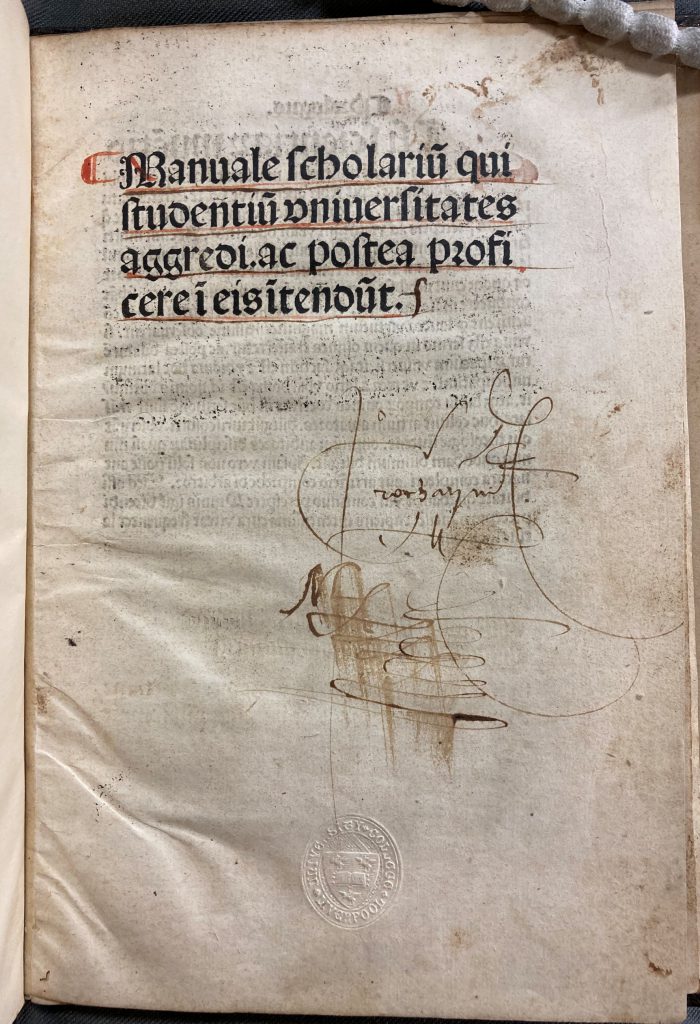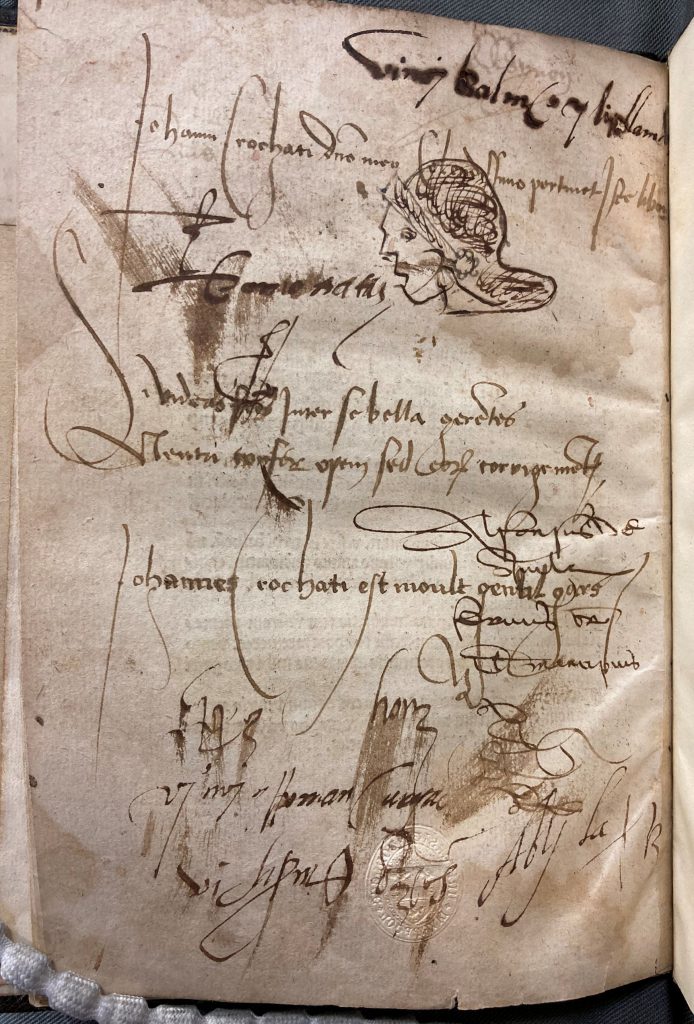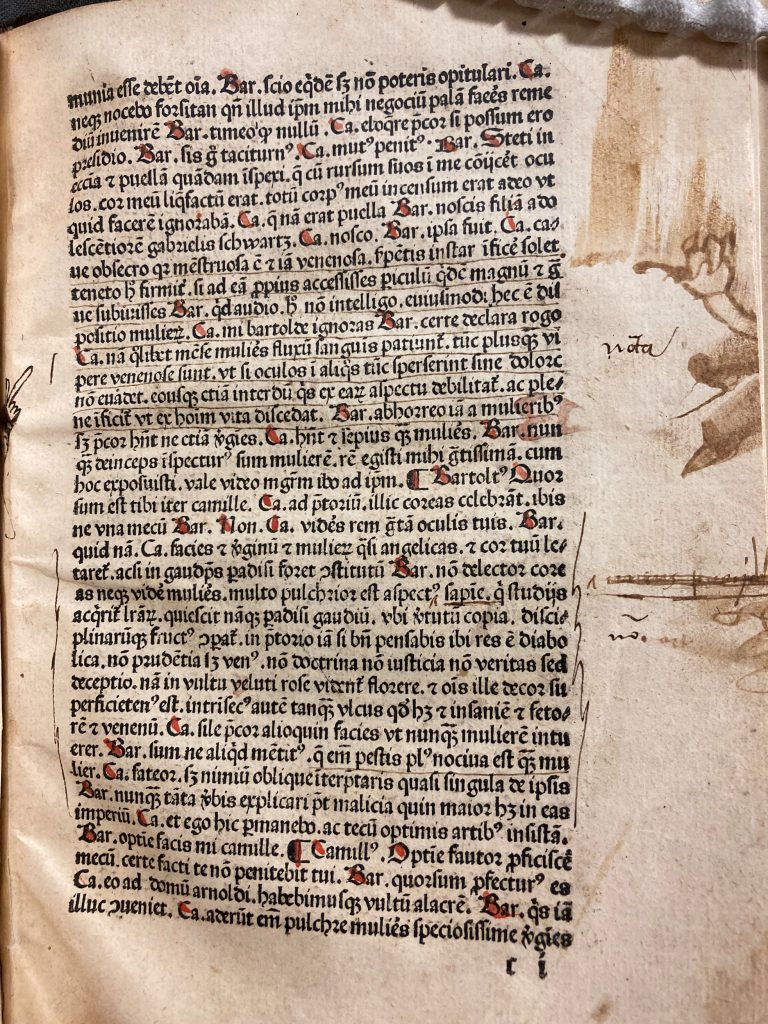For this year’s intake of freshers there exist no shortage of handy guides to student life to help them understand and prepare for the term ahead. But did you know that guides of this nature existed in the 15th century too?

The Manuale Scholarium takes the form of a series of dialogues – primarily between two students, Camillus and Bartoldus – in which they discuss a wide range of aspects of student life at the University of Heidelberg, in Germany. Topics covered include the process of matriculation; the minimum attendance necessary at lectures; the method and course of study; exams and university regulations; expenses (books, beer, bread); women; the benefits of taking a break and going for a walk; and how to get along with one’s housemates. Strikingly, these discussions build a picture of student life and concerns in the Middle Ages which many of those starting back at university this week might not find altogether unfamiliar. I’d hazard a guess that passages concerning “The manner of inviting distinguished persons to breakfast”, decrees mandating conversation in Latin, and the peculiarities of the initiation tradition, are somewhat more historical in their interest.
No doubt the most arresting passage of this short work is found in chapter 2 – which deals with the deposition (or depositio cornuum, meaning ‘knocking off of the horns’). This semi-official initiation ceremony is thought to have been designed to encourage humility and good conduct in new students, through a ritual casting-off of their most uncivilised, immature features. In the dialogue, the fresh-faced beanus (fresher) is mercilessly insulted and humiliated by two older students: accused of being a stinking, stupid, weak, ugly animal. To be made fit to join the student body, they deem that the newcomer must undergo a kind of purging process- involving the ‘surgical’ removal of his horns, teeth and beard, and confession of several terrible crimes. The ritual then culminates in the newcomer being made to buy dinner and wine for the other students and masters, as penance for his sins.
If this harrowing tale has whetted your appetite, you can compare and contrast with some more recent accounts of student life in our online exhibition Student Life in the University of Liverpool Archive. Or, if you are lucky enough to be on campus, our exhibition cases are now filled with examples of Student Work in the Archives.
| References and further reading: Seyboldt, R.F., The Manuale Scholarium: an original account of student life in the medieval university, (Cambridge, Mass., Harvard University Press, 1921) Ridder-Symoens, Hilde de, ed., Universities in the middle ages, (Cambridge, Cambridge University Press, 1992) Stevenson, Cait, Medieval Hazing: Freshman Orientation in the Middle Ages, (accessed 27/09/2021) |

